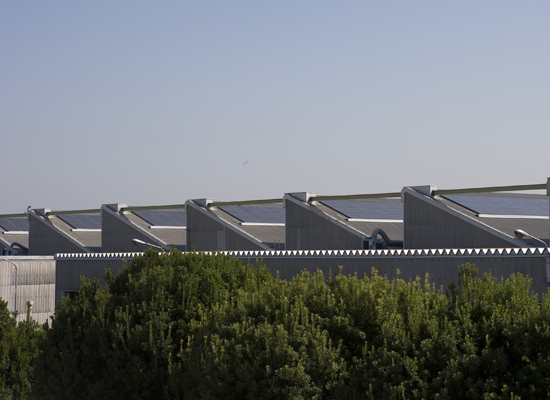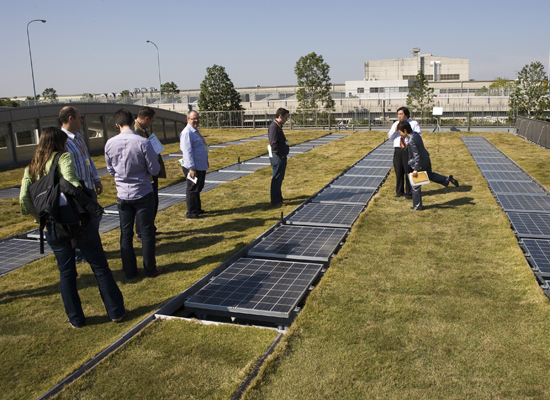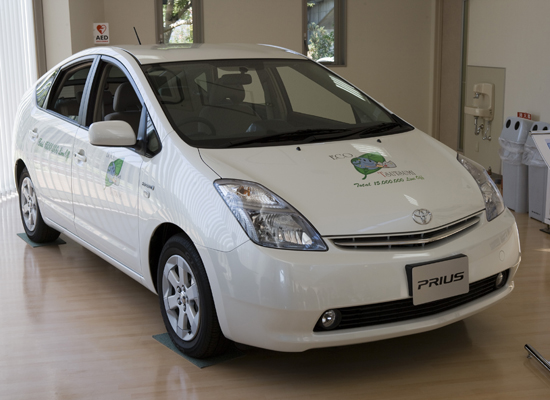 Without meaning any disrespect to the workers at the Tsutsumi Manufacturing plant in Toyota City, watching them work as like watching the perfect ant farm. It’s rare to see such organisation in human activity. Although being that this is Japan (the Switzerland of the east perhaps) it wasn’t overly surprising.
Without meaning any disrespect to the workers at the Tsutsumi Manufacturing plant in Toyota City, watching them work as like watching the perfect ant farm. It’s rare to see such organisation in human activity. Although being that this is Japan (the Switzerland of the east perhaps) it wasn’t overly surprising.
On the final day of Gizmodo’s tour of Japan courtesy of Toyota Australia, our hosts took us for an inside peek of Tsutsumi. The plant is special for a few reasons. One, it’s in Aichi in Toyota City. We kid you not, there is actually a place called Toyota City, and it’s a real city with suburbs and the rest, not just some lame attempt at making a Toyota plant sound cool. Toyota City is about an hour outside of Nagoya. The plant is also special for it’s sustainability initiatives. When we say sustainable we really mean it. Aside from that, the plant is also special for it’s green initiatives that pretty much blow everyone else’s out of the water (pretty much, some other companies are as good or better).
Tsutsumi is massive. Let’s not beat around the bush. How big? Well, we didn’t get any exact measurements, but we did get this fact: The plant has 50,000 square metres of photovoltaic solar panels. That’s the equivalent of 60 tennis courts of solar panels alone. You can imagine the size of the plant itself then. It’s the main producer of Toyota’s Prius model and also produces Camry, Corolla and other models specific to Japan.
Walking inside the massive buildings (yes plural, there are a fair few of them) is like walking into Santa’s workshop, if he were building Toyota cars. The walkways take you from the very beginnings of production to the very end. You go from seeing hundreds of workers running around with trolleys filled with parts to workers starting the finished cars and driving five metres to the end of the production line. Within a few buildings a box of parts suddenly becomes the shell of a car which then grows with the addition of engines, gearbox and other internal parts before getting seats and fittings, doors, a spray job, mirrors and wipers and then a brief test.
Each worker literally has only a few minutes to finish their job. The production line only stops in emergencies. For example, the wiper guy: He has a box of wipers for all different models. A model arrives, it moves slowly through his area while he picks the correct wipers, attaches them to their sockets, winds them tight, tests they are fitted correctly, checks a few other parts and then moves on to the next car on the line.
Issues do occur though, and when they do, the worker with the problem has a button to push that sounds a yellow alarm. It sounds the alarm and shows up on the monitors around the plant. It’s a problem that won’t stop the line. Managers have a quick consultation about the problem and often it can be resolved without stopping the production line. In severe cases there is a red alarm. Again, it sounds a different tune and shows up on the monitors. It has happened before but it’s only for serious cases. It’s a well-oiled machine now, excuse the terrible, terrible pun, so red problems are quite uncommon.
More impressive than its Swiss coordination is the plant’s green credentials. It’s one of the most impressive environmentally friendly manufacturing plants in the world. Since 1990 the plant has managed to cut its CO2 by 50 per cent. This is how they did it.
 Last year it installed those 60 tennis courts worth of solar panels. The total output of the panels is 2000kW, which is equal to the average consumption of 500 households. Sure, a manufacturing plant sucks up a lot more juice than 500 households worth, but it’s a bloody good start and there is a hell of a lot more. But just in case you’re wondering, this alone also reduced the plant’s carbon dioxide emissions by 740 tonnes per year, effectively saving 2500 drums of oil if we take a drum to be 200 litres. It’s also rather appropriate, being that the Prius is a hybrid and this is the Prius production plant. It effectively makes the plant a hybrid plant. These solar panels create about half of the electricity that the plant needs to operate. The other 50 per cent comes from gas co-generation.
Last year it installed those 60 tennis courts worth of solar panels. The total output of the panels is 2000kW, which is equal to the average consumption of 500 households. Sure, a manufacturing plant sucks up a lot more juice than 500 households worth, but it’s a bloody good start and there is a hell of a lot more. But just in case you’re wondering, this alone also reduced the plant’s carbon dioxide emissions by 740 tonnes per year, effectively saving 2500 drums of oil if we take a drum to be 200 litres. It’s also rather appropriate, being that the Prius is a hybrid and this is the Prius production plant. It effectively makes the plant a hybrid plant. These solar panels create about half of the electricity that the plant needs to operate. The other 50 per cent comes from gas co-generation.
Another cool thing is that the exterior of the plant’s buildings are covered in photo-catalytic paint. This breaks down airborne nitrogen oxides (NOx) and sulfur oxides (SOx). All 22,000 square metres of the assembly plant exterior is covered it in. Toyota has even painted one Prius with it. They would like to be able to sell Prius with this kind of paint but it’s extremely expensive and only comes in white so at this stage isn’t going to work. To put the effect of this paint in layman’s terms it has the same effect as planting 2000 trees, cleaning the air by producing oxygen in sunlight. Toyota also planted 50,000 trees at and around the factory in 2008.
 Since Prius production began in 1997, the plant has reduced the amount of waste going to landfill by 82 per cent and has instituted plans to achieve complete elimination of incinerated waste. They have also begun a water-recycling programme that has cut water discharge into surrounding waterways by 50 per cent. What’s more, the water they do discharge is five times cleaner than that in the waterways anyway.
Since Prius production began in 1997, the plant has reduced the amount of waste going to landfill by 82 per cent and has instituted plans to achieve complete elimination of incinerated waste. They have also begun a water-recycling programme that has cut water discharge into surrounding waterways by 50 per cent. What’s more, the water they do discharge is five times cleaner than that in the waterways anyway.
If you’re one of those people who thinks Toyota makes boring soccer mum cars, then you’re certainly entitled to that opinion. We certainly can’t say that the new Corolla or Camry sent shivers up our sports car loving spines (the Lexus LF-A might have though) but we have to bow our hats to Toyota’s energy saving ways.